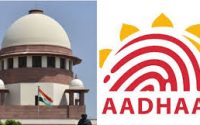$100 Website Offer
Get your personal website + domain for just $100.
Limited Time Offer!
Claim Your Website NowIt’s about time to bring abortion out of dingy alley, stigma
Source:- hindustantimes.com
The Supreme Court on Monday relaxed the 20-week legal ceiling on abortion to allow a woman to abort her 24-week baby with anencephaly, a life-threatening congenital defect where a baby is born without parts of the brain, skull and scalp.
India’s Medical Termination of Pregnancy (MTP) Act legalises abortions up to 20 weeks if there is threat to the mother’s life or her physical or mental health, or if the unborn baby has abnormalities, but many women end up using unsafe abortions methods because they don’t know where or who to go because there are not enough legal providers. Many don’t even know it’s legal to abort up to 20 weeks.
Unsafe abortions kill 10 women each day in India, where an estimated 6.8 million women choose methods each year to terminate pregnancies that threaten their health and life.
“Unsafe abortion is responsible for 8% of all maternal deaths, which makes it the third biggest cause of women dying of childbirth-related causes in India, shows data extrapolated from SRS 2002-03. We need to strengthen availability of data on abortion to make the services even more robust and responsive to women,” says Vinoj Manning, executive director, Ipas Development Foundation, an NGO that works on increasing access to abortion care.
Keeping in mind the limitations of the abortion law, the Union health ministry has proposed amendments to increase the number of skilled providers and relax the cut-off for legal abortions. The proposed changes are with Cabinet for its nod before being tabled in Parliament.
“The amendments are women-centric as opposed to the provider-centric provisions in the earlier act. The proposed bill aims to give each woman control over decision-making related to her life and body,” said a Union health ministry official who does not want to be named.
Changing times
The apex court’s ruling is in line with the amendments, which has set no upper limit for abortions if the baby has “substantial foetal abnormalities,” which will be defined in the rules drafted after the bill is approved by Parliament.
Among the key changes is widening of the provider base to include auxiliary nurse midwives (ANMs, village level healthworkers), nurses and ayurveda, homeopathy and unani practitioners trained to use medical methods to terminate early stages of pregnancy; relaxing the upper limit of legal abortion from 20 to 24 weeks for “vulnerable” groups who may have delayed seeking services because of stigma or lack of information, and removing restrictive terminology in the act to make services available to all women.
“Vulnerable groups include women with disabilities or mental health problems, rape and incest survivors, and widows and single women who may need more support because tremendous social stigma may prevent them from seeking legal abortion services,” says Mumbai-based Dr Nozer Sheriar, past secretary-general of FOGSI (federation of obstetrics and gynaecologist societies of India), who was part of the Union health ministry’s expert panel that drafted the amendments.
Awareness that abortion is legal in India is abysmal, ranging between a low 36% in Bihar and Jharkhand to a dismal 12% among Jharkhand youth ages 15-24 years, show studies published in 2012-13. “Many women still don’t know who and where to go and bringing in mid-level providers will ensure last-mile connectivity,” said Dr Sheriar.
Among the other proposals is the confidentiality cause, reducing the requirement for the opinion of two service providers for second-trimester pregnancies to one, and removing restrictive terminology to make the law consistent for all women, such as changing “married” to “woman” to include single women in the clause of contraceptive failure, and changing the reference of “husband” to “partner”.
Rough sailing
The amendments are however drawing flack from some affected groups. The Indian Medical Association (IMA) is against medical abortion being taken out of the purview of clinicians. “Medical abortion medicines are not over-the-counter drugs, they are scheduled medicines that should be given by a registered medical practitioner because they may have side-effects,” says Dr K K Aggarwal, national president, IMA. “Follow-ups are needed to track side effects and incomplete abortions, and complications such as an ectopic pregnancy can only be handled by a skilled practitioner,” he says.
Critics say physicians are simply resisting losing business to other providers. “Under the proposal, after training, ANMs can give medicines to terminate pregnancies up to seven weeks, and nurses and alternative practitioners up to nine weeks. Surgical abortions will still only be done by registered physicians as the safety of the woman is paramount,” says the ministry official.
The confidentiality clause is also likely to run into a roadblock in the form of Protection of Children from Sexual Offences (PROCSO) Act, under which all pregnancies involving minors must be reported to the police. The clause that minors under 18 years need the consent of a guardian for an abortion remains unchanged.
Those supporting the amendments say what matters most is what women need. “Lack of services may force many women to resort desperate measures. Not providing services to every woman who needs it is not an option,” said Dr Sheriar.
Agrees Manning: “These amendments would bring about incredible benefits to women’s lives and in my opinion, constitute the most significant advancement to strengthen women’s right on their own bodies and health since abortion was liberalised in India in 1971.”



